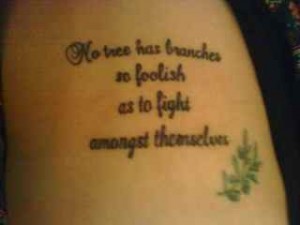A tradition for graduating seniors at USC is to run through all 29 fountains on campus. And although I dont think too many people actually do this, youre supposed to have a shot in each fountain. People can either buy shirts from the Facebook group or make their own. Some people wear goggles, or floaties. A few like to climb all over the fountains and stuff. Uh, yeah, so basically I think this means that youre graduating and saying goodbye to campus, so youre seeing the landmarks one last time with your classmates before you disperse into the world.
I completely agree with the analysis and would just add that it is a liminal stage of transition to being an active, educated member of society. People employ such a tactic in order to also act against authority one “last” time by participating in a festivity that would ordinarily have a certain degree of ramifications. It is altogether a way of ending an era, remembering it, and preparing for the life ahead.

